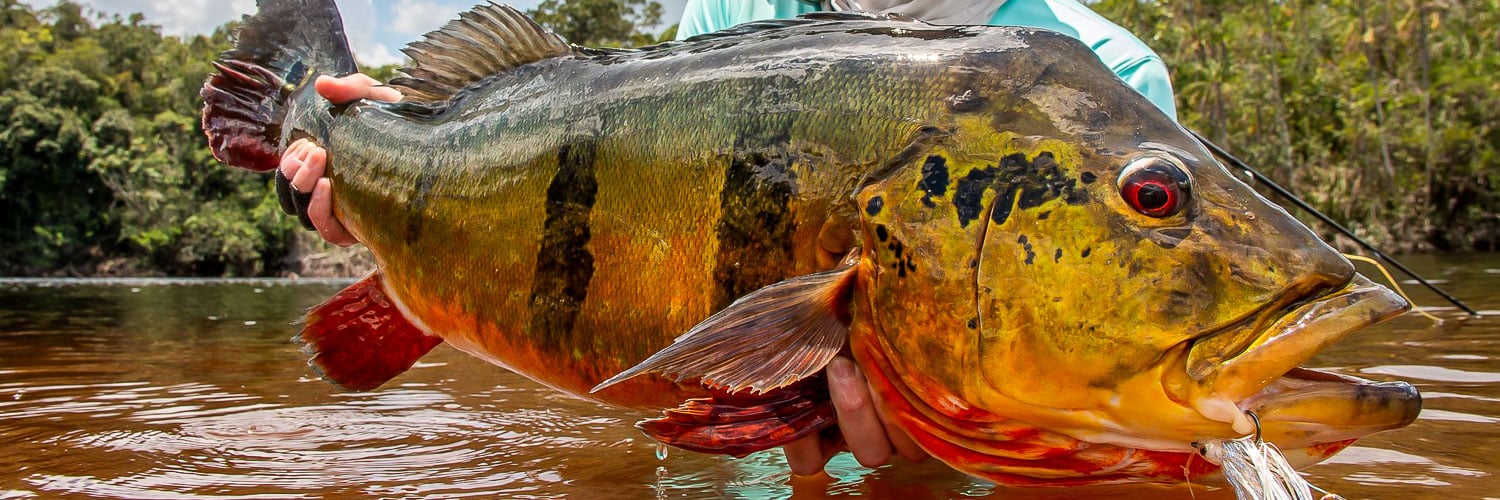

The Peacock Bass is a freshwater fish native to the Amazon and Orinoco Basins in South America. The Brazilian name comes from Tupi, an indigenous language of Brazil, meaning “Friend Of The Tree”, as this best describes the fishes nature of staying close to submerged trees to hunt and protect itself and its nests. The fish are very territorial species, roaming an area of perhaps 100 to 200 yards, attacking anything disturbing their peace, whether they are feeding or not.
There are around 15 species of Peacock Bass, but the three species most common amongst anglers are the Peacock, Butterfly and Spotted. The average size is approximately 6lb to 7lb, but 10lb to 15lb fish are very common, and fish to nearly 30lb have been caught and landed. The fish are ferocious predators with a killer instinct. They are often referred to as the ‘freshwater bully’, preying on any species that catches their eye, including Tilapia, Crayfish, Tadpoles and Guppies. They’ll even turn their attention to their own young when food is scarce. Feeding in groups or packs, they’re a pretty sociable species, with juvenile fish feeding in groups of up to two hundred. Even as they grow, a large, old fish would still have company.
Despite not growing to mammoth proportions, they still provide the angler with a significant challenge due to their brutal nature and the hard fighting pound for pound ability. Fly fishing, with poppers and large streamers, has become an increasingly popular way to catch them.
Below are the top destinations in the world for Peacock Bass Fishing.


Nestled deep in the untouched Mataven jungle of Colombia, Akuani River Lodge offers travelling anglers a unique opportunity to explore two exceptional and contrasting river systems in a single, action-packed trip. With access to both the Vichada River, known for its Peacock Bass, and the Orinoco River, home to the hard-hitting Payara.


The Akuani Floating Camp is nestled in the heart of the untamed jungle in Colombia's pristine wilderness, and it provides an unrivalled fly and lure fishing experience for trophy Peacock Bass, fierce Payara, Pacu and a range of different Catfish. Every cast promises a memorable encounter in some of South America's most biodiverse and unspoiled waters.
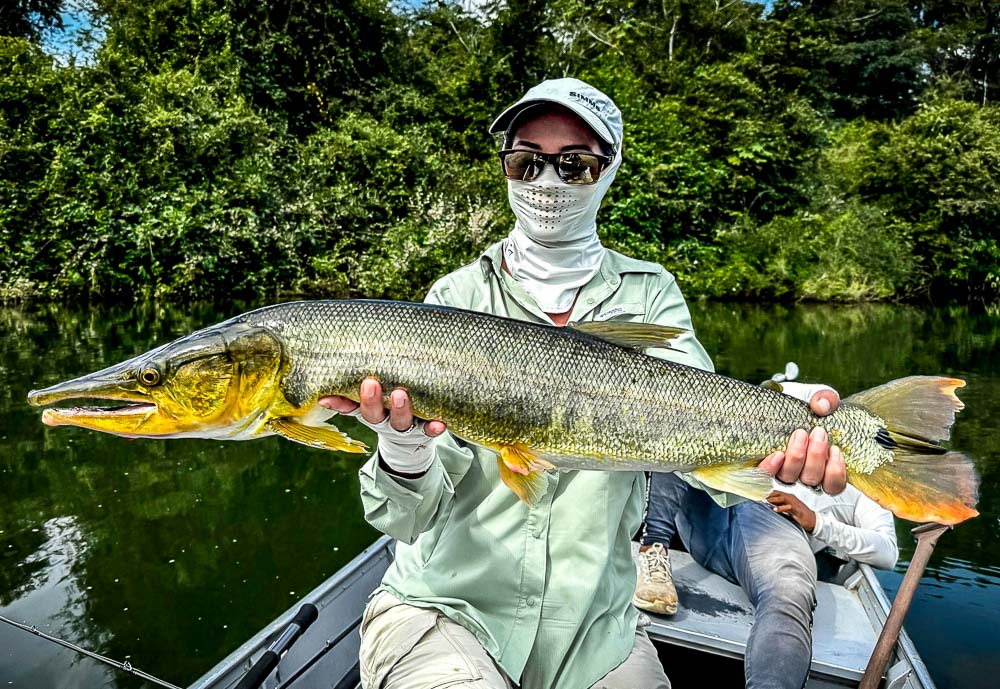

Hosted by a Sportquest Holidays host, this exclusive trip to Kendjam Lodge in the depths of the Brazilian Jungle offers travelling anglers the opportunity to wet a fly on some of the most remote water in the world. Sight fishing the crystal clear waters of the Iriri River for a vast array of hard-fighting jungle species.
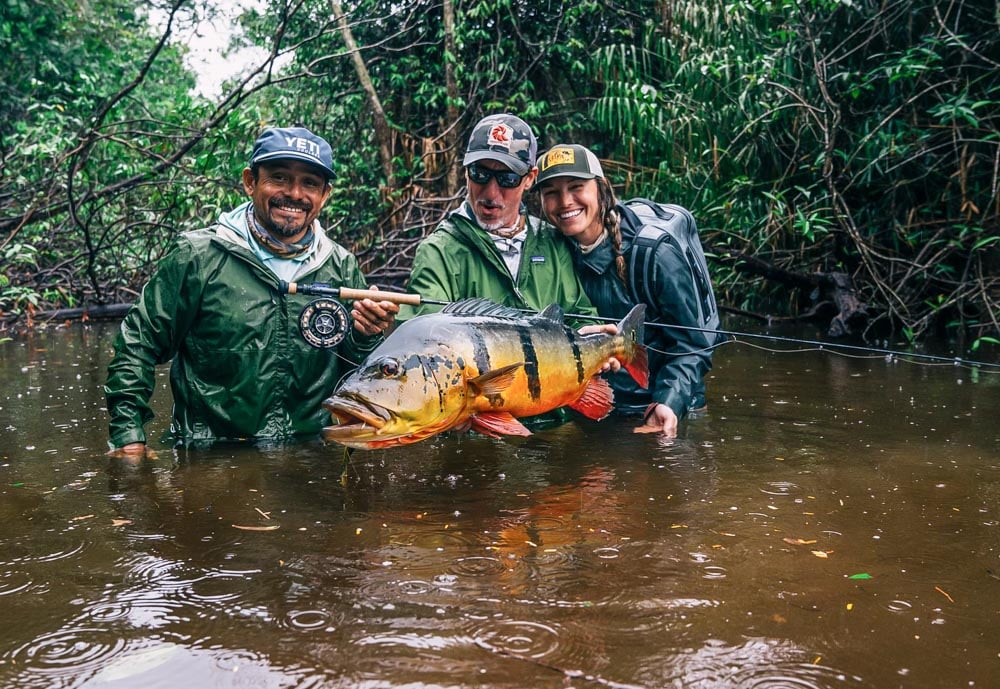

Hosted by a Sportquest Holidays host, this exclusive trip to the depths of the Brazilian Jungle at Rio Marie Lodge offers travelling anglers the chance to fly fish for some of the largest Peacock Bass found anywhere in the Amazon Basin and the world. This fishing operation is undoubtedly one where anglers can pursue and conquer the dream of a world record on the fly.
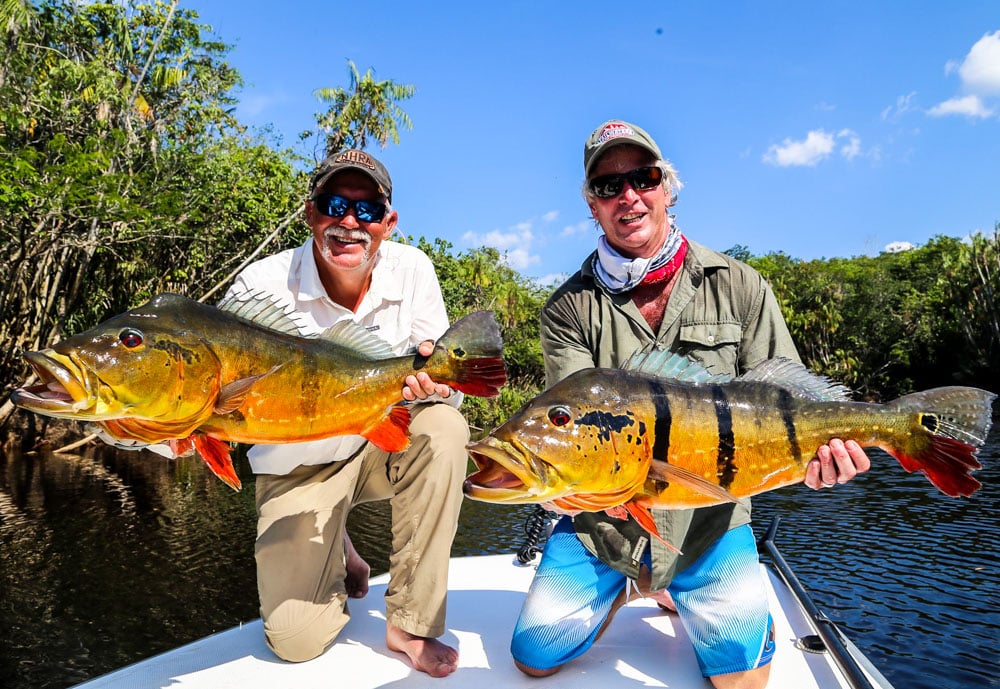

The fishing at the Rio Marie Lodge is some of the best found anywhere in Brazil, and this isn't just a guess; it's a fact. The river holds at least double the quantity of trophy-sized Peacock Bass compared with any other destination in the Rio Negro basin and offers travelling rods the chance to sample some explosive sport.


Kendjam Lodge in the Xingu basin, which the Iriri River is part of, is now the first official sport fishing operation in Brazil, located inside an Indigenous Territory. It offers the most intense jungle fishing experience found anywhere in South America and the World, giving freshwater fly anglers the chance to enjoy some truly wild, explosive mixed fishing.
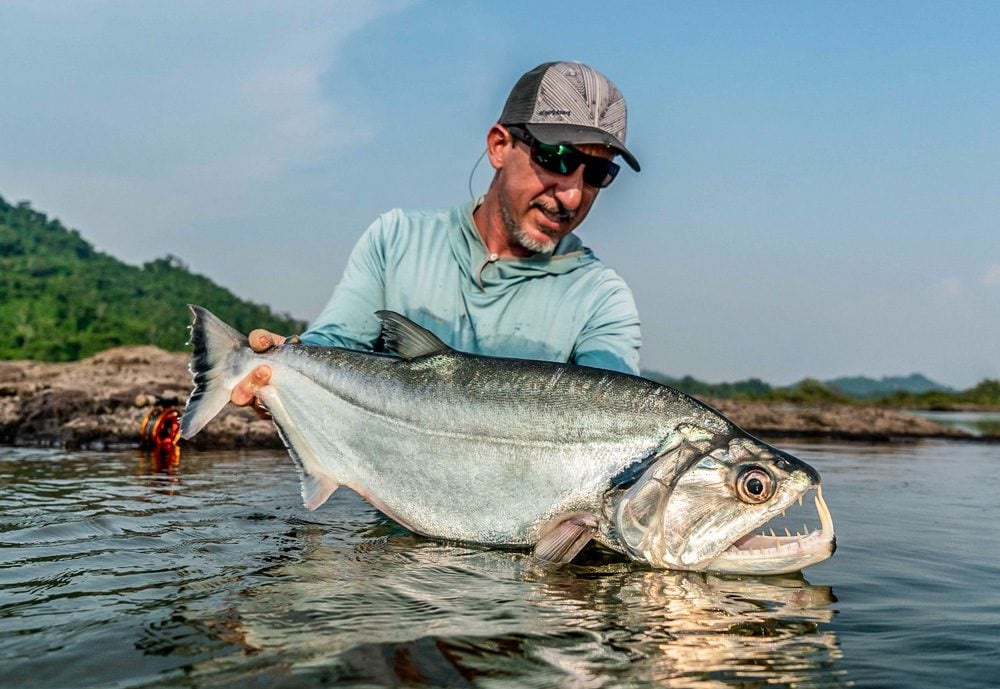

Across this spectacular wilderness territory, the protected, mythological Xingu River, flows over granite bedrock, running clear and allowing for sight-fishing opportunities for a wide variety of species. But what sets Xingu apart from anywhere else in the Amazon are the impressive numbers of large Payara - one of the hardest-hitting and strongest fighting fish in the Amazon.
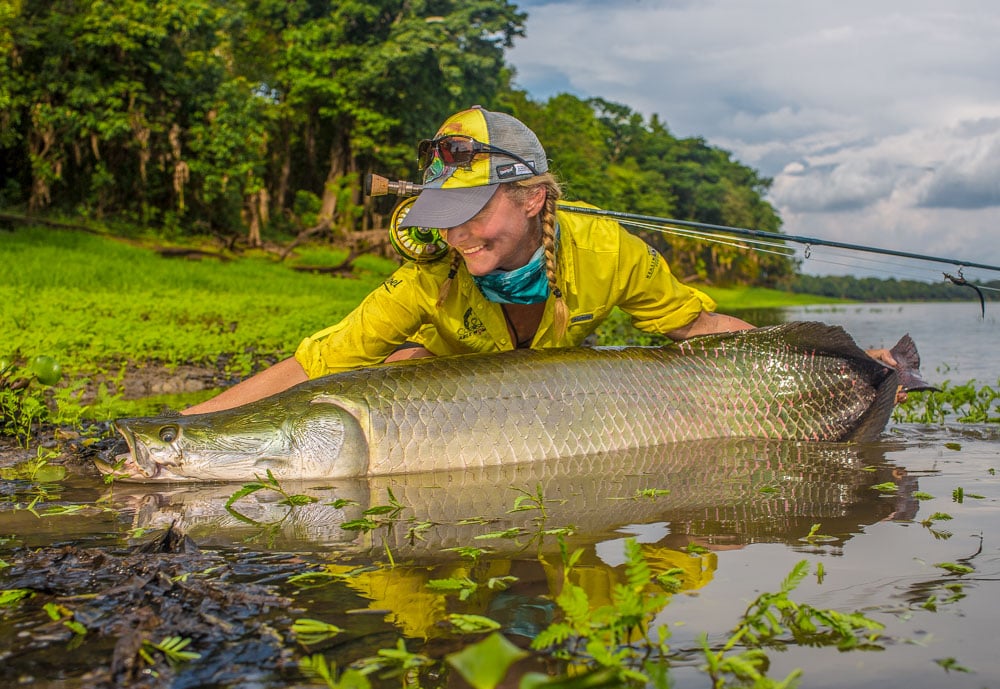

Visit the best destination in the world to catch Arapaima all exclusively on the fly. Enjoy 6.5 days fishing at Pirarucu Lodge, the largest Arapaima fishing reserve on this planet, all set in the stunning Amazon rainforest. Also, how about, on average, catching 3.5 Arapaima each day, plus many other species all on your fly rod.


Average Customer Satisfaction Score 96%
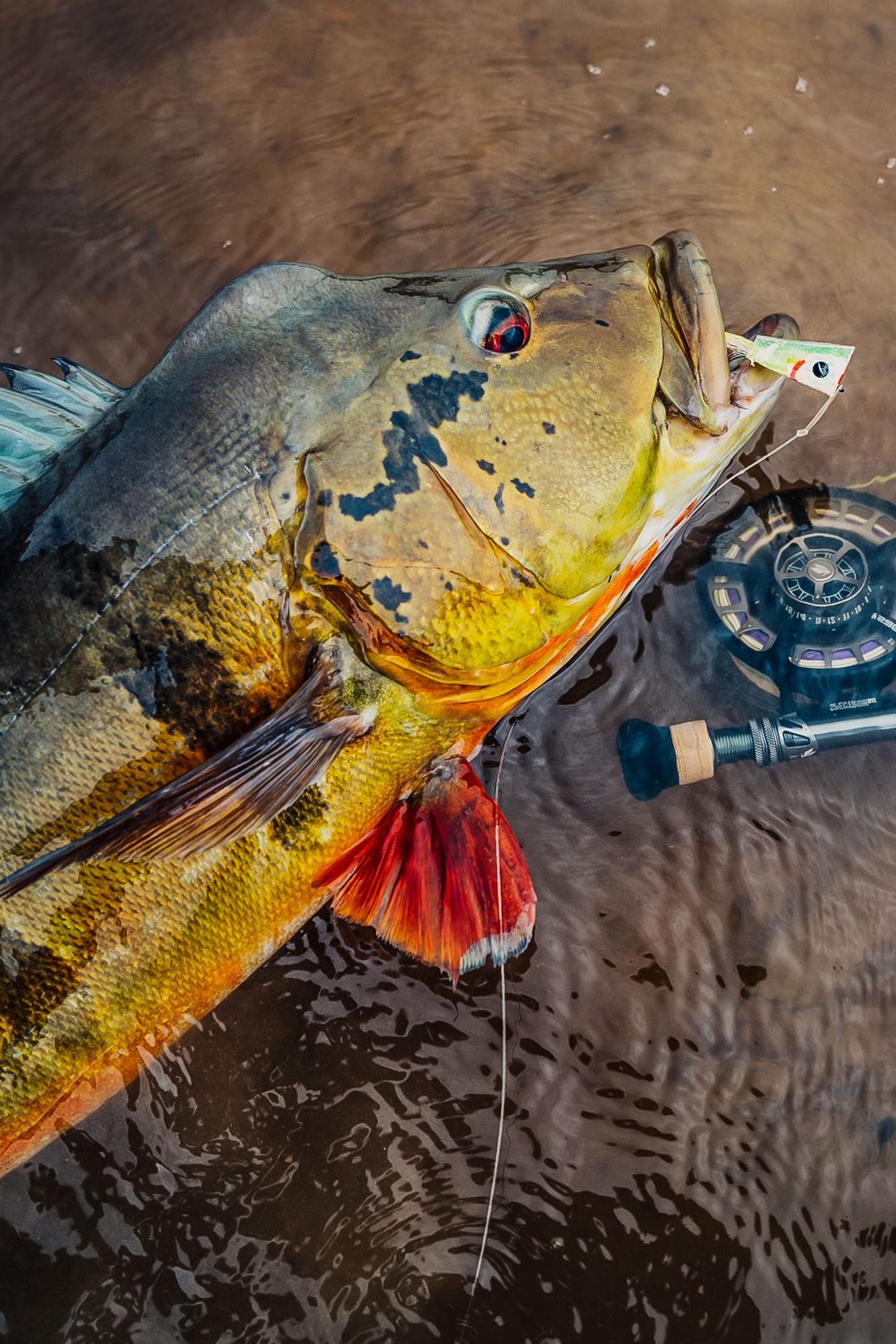

Name: Peacock Bass
Also Known as: Tucanaré, Pavon
Scientific Name: Cichla Ocellaris
Peacock Bass are unmistakable in their appearance and are the largest of all cichlid fishes. A beautiful species, they take on many different guises, but most have a colour pattern based on a theme of three broad vertical stripes on their bodies, sometimes with smaller intermediate bands on a grey, brown, yellow, or green background. However, seeing fish with dark rosettes instead of stripes, light speckles, and impressive shades of bright green, orange, blue, and gold is not unusual.
The Peacock Bass’s most distinguished feature is a spot on its tail fin that resembles the eyes on a peacock’s tail feather – this feature gives it its common name. In addition, many adult fish, primarily males, will also develop a pronounced hump on their foreheads during the rainy season, which also tends to coincide with when the fish spawn.
It’s generally accepted that Peacock Bass spawn twice a year, although there is some debate on whether these are two distinct spawning seasons or a single sustained session. Much like Largemouth Bass, they create spawning beds and guard them religiously. However, unlike most other fish, males and females will pair up for the duration of the process.
Fact: The spot on the Peacock Bass’s tail is a standard feature on many South American Cichlids and is thought to deter predators and fin-biting Piranhas.
Peacock Bass are primarily found in South America, particularly the Amazon Basin, drained by the Amazon River and its tributaries. This area spans over seven million square kilometres and covers parts of Bolivia, Brazil, Colombia, Ecuador, Guyana, Peru, Suriname, Venezuela, and French Guiana.
Peacock Bass require very warm water temperatures and will perish in water below 62 degrees; being a sight feeder, relying heavily on their large eyes to detect prey, they struggle to operate in murky, muddy water, which is why the pristine waters of the Amazon region are the ideal living conditions.
Brazil is one of the best locations in the world to target and catch Peacock Bass, with the Rio Marie River, one of the Rio Negro basin’s main tributaries, one of the best destinations in the world. Studies have shown that the river holds at least double the quantity of trophy-sized Peacock Bass compared to others in the region. For travelling fly fishing anglers, this equates to a genuine opportunity to catch some of the largest Peacock Bass found anywhere in the Amazon Basin and the world. This fishing operation is undoubtedly one where fly anglers can pursue and conquer the dream of reaching a world record on the fly.
The average size of the Speckled Peacock Bass in the river is 10lb, and fish over 15lb are not uncommon; year after year, the river has also seen a significant influx of fish weighing over the magical 20lb mark. As a result, it’s now the most prolific river in Brazil for trophy Peacocks. The fishing in this area usually runs from August to February, which coincides with the dry season for the upper Negro basin. During this time of year, the waters are typically at their lowest and most stable, which allows for the best fishing throughout the entire river system, including its numerous tributaries and lagoons.
Our Top Peacock Bass Fishing Destinations:
Rio Marie Lodge Brazil
Kendjam Lodge Brazil
Xingu Lodge Brazil
Note: Rio Marie is focused on Peacock Bass fishing, whereas Kendjam and Xingu offer the chance to target Peacock Bass along with a host of other species.
If you’re travelling to Brazil to target Peacock Bass, you may find this blog helpful: Peacock Bass Fishing In Brazil – 10 Things You Need To Know.
As an apex predator, Peacock Bass can be caught using various methods, including lures, live baits, and fly fishing. However, at all our destinations, fly fishing is the practiced and preferred method. Due to their highly territorial nature, they thrive in environments like lagoons, river margins, inlets, backwaters, and shallow areas with abundant structures and sand bars.
They prey on a wide variety of species, including their own, and during their juvenile stage, they may also prey on shrimp, insects, and other arthropods. Their activity is highest during days with higher temperatures and light intensity, typically between 9 am and 3 pm.
The regular single-handed rods used are 7 to 10 weight, but many anglers will have two rods rigged with different lines and/or flies in the boat and bring an extra backup rod. Powerful rods with a firm butt section are the norm. It’s best to rig one 7 or 8-weight saltwater rod with a floating line for smaller peacock bass and one 8, 9, or 10-weight with an intermediate (clear) sinking line for the larger fish.
Reels designed for saltwater fly-fishing are the best choice. Leaders should be heavy enough to turn over a big wind-resistant fly. A 6-foot piece of 50 or 60-pound fluorocarbon is recommended as the go-to leader. Additionally, record-seekers should bring a wider variety of tippet strengths.
For fly fishing, baitfish imitations are commonly used. Flies should be easy to cast, have good action and silhouette in the water, and range from 5 to 8 inches long, with 4/0 to 6/0 high-quality hooks. Synthetic material streamers like the Peacock Cruiser and the Bad Attitude Baitfish are popular, while other baitfish imitations have also proven successful. Large flies with rattles inside are particularly effective, and topwater flies such as big foam poppers and divers also catch good numbers of fish.
If you’d like to learn more about Peacock Bass fishing flies, you can read our dedicated blog post here: Guide to the Best Flies for Peacock Bass Fly Fishing in Brazil.
Peacock Bass are the largest of their species and can reach up to 30lb in weight; however, the largest fish landed at our destination of Rio Marie in Brazil is just under 29lb. Anything over 10lb is considered a good fish, while anything over 20lb is considered a specimen.











